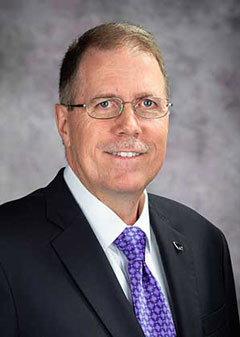September 11, 2019
Bridge year begins

Dear colleagues,
As President Myers recently noted in his welcome back letter to campus, the beginning of the new school year brings excitement and promise. In many ways, this year, the first year of our new budget model, mirrors that same sentiment. As you'll recall, the first year of our budget model, also known as the "bridge year" is our first step away from an incremental budget model. We are moving toward a model designed to reward units for growth and productivity, which incentivizes good management and decision-making and is transparent as to the costs associated with delivering on our research, teaching and service missions.
One of the most important aspects of our new budget model is the strategic investment fund. This component of the model is our mechanism for investing in the key strategic priorities of the university. During the bridge year, almost all of the monies in the fund are being allocated toward Revenue Center Investment also known as subvention. This investment provides for initial budgetary stability for Revenue Centers as we begin the multiyear phase-in of the new budget model.
However, as part of our final FY 2020 budget planning, we did identify a small pool of $250,000 to kick-start our transparent budget allocation process. Recently, deans and vice presidents were notified that the University Budget Planning Team is accepting proposals for utilizing this pool of money. Although all proposals are welcome, given the limited resources within the fund, the budget planning team has established that the top funding priorities will focus on supporting the mission of K-State and Strategic Enrollment initiatives. They will review the proposals and recommend to the Core Executive Team the top strategic investments across the university. Review the details of the proposal process online.
Inherent within our guiding principles, transparency is a key component of the new budget model. As such, we have posted the FY 2020 bridge year major unit calculations to the budget project website. These calculations recognize our estimated FY 2020 responsibility center management activated tuition revenues distributed through the tuition revenue sharing formulas as well as service center cost allocations.
As you compare the FY 2019 and FY 2020 calculations you'll note that the budgets for revenue and service centers changed considerably. As noted in President Myers July budget update letter, the university undertook several actions to invest in key strategic areas and balance our budget for FY 2020. We also realigned long-standing commitments traditionally budgeted in the Central and Provost Reserves into the applicable Service Center budget. This more transparently aligns budgets with where the activity truly occurs. This resulted in a decrease in the reserve budgets but an increase for the Service Center budgets.
I am truly excited by the opportunities for innovation and change presented by our new budget model. It isn't often that higher education institutions undertake such a monumental effort to modernize budgeting and business practices. I wish to thank the members of the University Budget Planning Team, Budget Model Review Panel, and Core Executive Team for their work throughout the shadow year to position us to begin our budget journey!
Sincerely,
Chuck Taber
Provost and Executive Vice President
